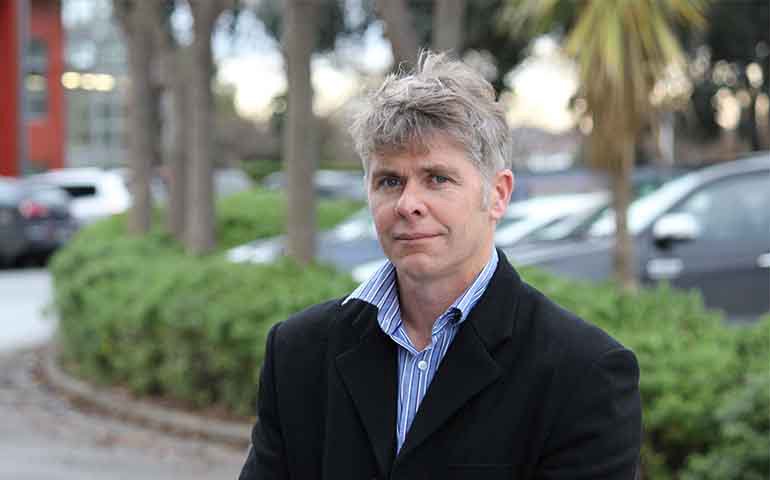The NZ dairy herd increased 82% between 1990 and 2019, with some of the largest increases in Canterbury and Southland. Neal Wallace investigates the future of dairying in those regions and talks to some innovators who are confident that with the use of technology and management changes, dairying has a future.
It required a new approach to management, but researchers at the Lincoln University Dairy Farm (LUDF) have halved nitrogen losses as they adjust to farming within a synthetic nitrogen limit of 190kg/ha.
Jeremy Savage, a farm consultant with McFarlane Rural Business and also the demonstration lead at the South Island Dairying Demonstration Centre at Lincoln, says research by DairyNZ and AgResearch has reduced nitrogen loss on the property from 72 to 36kg/N/ha a year.
It has achieved this through lower stocking rates, using less bought-in supplementary feed, applying less nitrogen and culling cows earlier.
Culling starts on April 1, before the weather and ground conditions heighten the risk of leaching rates from cow urine.
He said Lincoln is also fine-tuning its irrigation use and embarking on a plan to plant a third of the farm in plantain at the rate of 10% a year.
The nitrogen capturing characteristic of the plant is expected to further reduce annual losses from 36kg/ha to 26kg/ha, but he said there will be challenges integrating the management of plantain into general pasture rotation.
“We are getting to the high hanging fruit here,” Savage said.
The farm’s stocking rate has been reduced from 3.9 to 3.5 cows/ha, a reduction of 70 cows to 580.
Synthetic nitrogen use has been lowered from an average of 300 to 160kg/ha/a year, but Savage said production per cow has actually increased from 430 to 500kg/MS/cow.
He attributed that increase to more careful pasture and stock management to compensate.
Achieving lower nitrogen losses will prove challenging for some farmers, especially those who have high cost production systems that produce marginal cost milk.
The cost of marginal milk, where a high stocking rate is supported by all year round grain feeding, comes with production costs of $8-plus kg/MS.
“They will have to make substantial system changes if they are to achieve lower nutrient losses,” he said.
Some have made changes with the average supplement use among his clients falling from 800kg/cow to 580kg/cow in the past five years.
Research is also looking at the impact on nitrogen losses of variable milking on production and land-use intensity.
At LUDF, Savage said they are specifically looking at milking 10 times in seven days: twice on Monday, Wednesday and Friday and once on Tuesday, Thursday, Saturday and Sunday.
Initial findings are that production per cow is about 5% lower.
“The idea is that this milking pattern lowers energy demand so less feed is required, but there will be savings in fuel and electricity, winter feed, cleaning and staff,” he said.
Fonterra is forecasting a 2% reduction in future milk production, but Savage said while a portion will be from fewer cows, especially in Canterbury and Southland, there are other factors.
It will also be driven by land-use change, small farmers exiting the industry and urban encroachment as dairy farms are subdivided.
While winter grazing regulations will reduce nitrogen loss, he said it will also reduce phosphate washing into waterways by encouraging farmers to protect critical sources and risky areas when sowing winter crops.
But the provision in the regulations, which restrict the area cattle can be wintered, removes flexibility and restricts winter grazing to where it is at present.
For example, drier areas of Northern Southland are suited to wintering grazing, but unless areas are designated for wintering cattle, to get approval requires a resource consent process.
Savage said there has been a reduction in the number of graziers for next year which could create a supply problem.
He is optimistic research will continue to find solutions, such as the joint Ravensdown and Lincoln University developed EcoPond, which has reduced methane emissions from effluent ponds by 99.9%.
He is hopeful a nitrogen inhibitor will follow.
“Investing in science has meant we are able to resolve a lot of issues and I am sure we will into the future,” he said.
Read more articles in the special report series “Dairying has a future“






